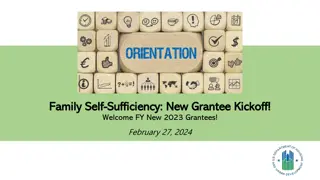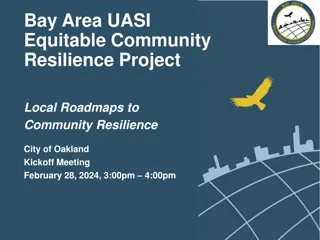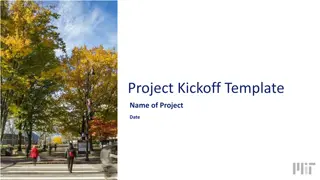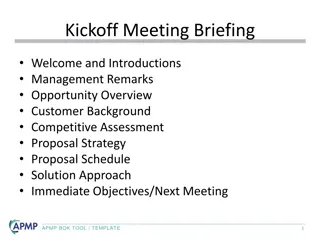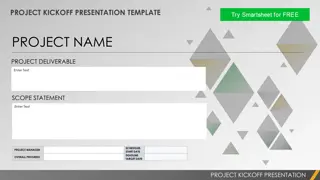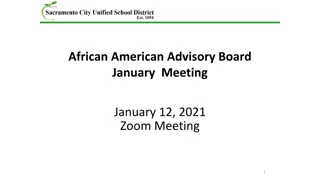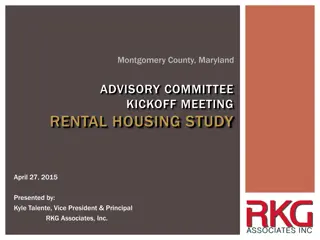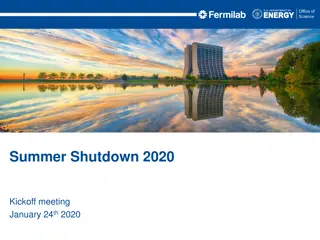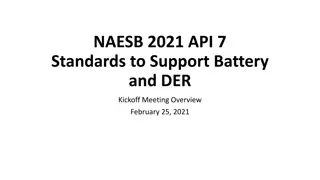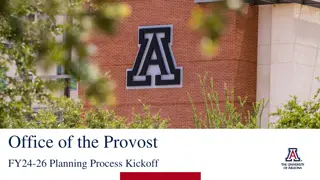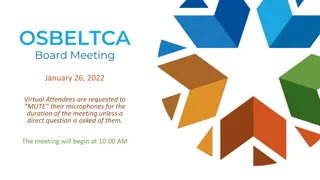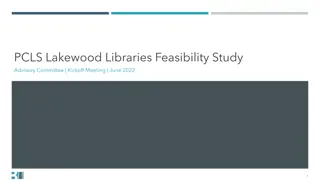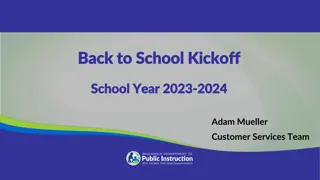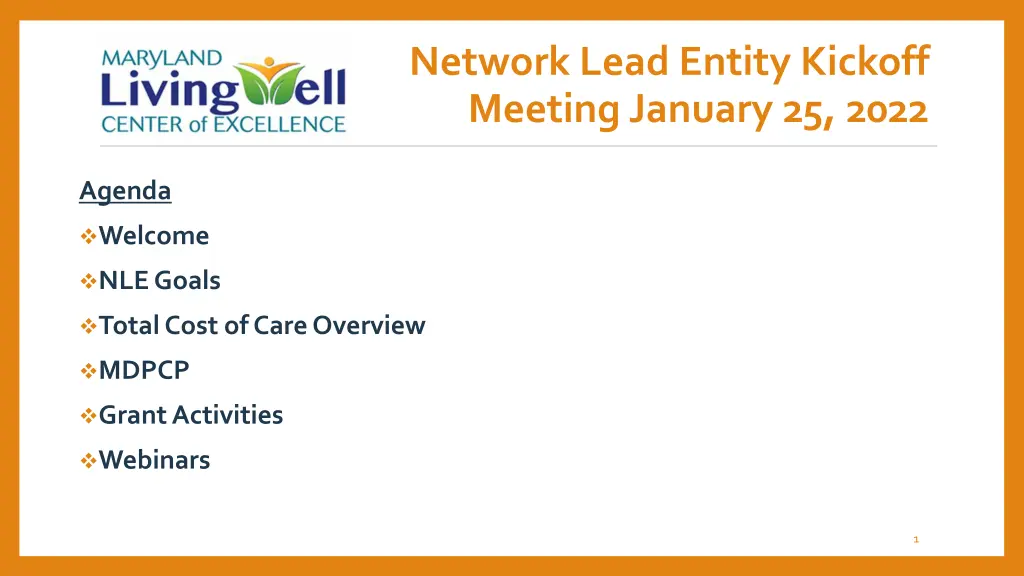
Maryland Total Cost of Care Model Overview
Explore the Maryland Total Cost of Care Model, including the Maryland All-Payer Model and MDPCP. Learn about the goals, structure, and impact of these initiatives in improving Medicare quality and cost savings. Discover how the TCOC Model sets limits on per capita Medicare spending and incentivizes coordinated patient-centered care across healthcare providers in Maryland.
Download Presentation

Please find below an Image/Link to download the presentation.
The content on the website is provided AS IS for your information and personal use only. It may not be sold, licensed, or shared on other websites without obtaining consent from the author. If you encounter any issues during the download, it is possible that the publisher has removed the file from their server.
You are allowed to download the files provided on this website for personal or commercial use, subject to the condition that they are used lawfully. All files are the property of their respective owners.
The content on the website is provided AS IS for your information and personal use only. It may not be sold, licensed, or shared on other websites without obtaining consent from the author.
E N D
Presentation Transcript
Network Lead Entity Kickoff Meeting January 25, 2022 Agenda Welcome NLE Goals Total Cost of Care Overview MDPCP Grant Activities Webinars 1
Network Lead Entity Goals Goal 1: Standardize social determinants of health screenings across the aging network, including non-profit community organizations, primary care providers and hospitals, and align services for referrals and reimbursement through the Total Cost of Care Model. Goal 2: Together with MDoA, develop integrated statewide systems to support access to and sustainability for billing Medicare and promote a continuum of care between clinical and community providers to address social and health needs. 2
Maryland All-Payer Model The Maryland All-Payer Model, launched in 2014, established global budgets for certain Maryland hospitals to reduce Medicare hospital expenditures and improve quality of care for beneficiaries. Global budgets provide hospitals with a fixed amount of revenue for the upcoming year. A global budget encourages hospitals to eliminate unnecessary hospitalizations, among other benefits. Under the All-Payer Model, Maryland achieved significant savings for Medicare and improved quality. However, the Maryland All-Payer Model historically focused solely on the hospital setting, constraining the State s ability to sustain its rate of Medicare savings and quality improvements. The Maryland TCOC Model builds on the success of the Maryland All-Payer Model by creating greater incentives for health care providers to coordinate with each other and provide patient- centered care, and by committing the State to a sustainable growth rate in per capita total cost of care spending for Medicare beneficiaries. 3
Total Cost Of Care MDPCP The Maryland Primary Care Program (MDPCP) is structured to incentivize primary care providers in Maryland to offer advanced primary care services to their patients. Participating practices will receive an additional per beneficiary per month payment directly from CMS intended to cover care management services. The MDPCP also offers a performance-based incentive payment to health care providers intended to incentivize them to reduce the hospitalization rate and improve the quality of care for their attributed Medicare beneficiaries, among other quality and utilization-focused improvements. Starting in 2021, Federally Qualified Health Centers (FQHCs) are eligible to participate in Track 1 of the MDPCP. 4
Total Cost of Care The Centers for Medicare & Medicaid Services (CMS) and the state of Maryland are partnering to test the Maryland Total Cost of Care (TCOC) Model, which sets a per capita limit on Medicare total cost of care in Maryland. The TCOC Model is the first Center for Medicare and Medicaid Innovation (Innovation Center) model to hold a state fully at risk for the total cost of care for Medicare beneficiaries. The TCOC Model builds upon the Innovation Center s current Maryland All-Payer Model, which had set a limit on per capita hospital expenditures in the State. The Maryland TCOC Model sets the state of Maryland on course to save Medicare over $1 billion by the end of 2023, and the Model creates new opportunities for a range of non-hospital health care providers to participate in this test to limit Medicare spending across an entire state. 5
Total Cost Of Care CRP The Care Redesign Program (CRP) allows hospitals to make incentive payments to nonhospital health care providers who partner and collaborate with the hospital and perform care redesign activities aimed at improving quality of care. A participating hospital may only make incentive payments if it has attained certain savings under its fixed global budget and the total amount of incentive payment made cannot exceed such savings. Thus, the CRP and distribution of incentive payments under the program does not increase overall Medicare expenditures. In order to participate in the CRP, a hospital must enter into a CRP participation agreement with CMS and the State. 6
BAMM ASSESSMENT NETWORK LEAD ENTITY BUSINESS ACUMEN MATURITY MODEL | SCORECARD MAC, Inc. / Living Well Center for Excellence | January 2022 7
NLE Grant Activities Integrate a statewide system to support access, sustainability, and participation in Evidence-Based Behavior Change Programs Implement standard screening for SDOH needs across CBOs and Providers Establish a multi-cultural aging network and create a Reimbursement Learning Collaborative for AAAs and CBOs Work with MD hospitals, the MD Primary Care Program and CRISP to document ROI and improved quality of life for older adults and people with disabilities Leverage existing contracts to pilot reimbursement models that will lead to sustainable funding streams. 8
Next Meeting Date Thursday, February 17th 1:00-2:00PM Zoom invite will be sent for monthly meetings to be held on the third Thursday of the month from 1-2PM Future calls will be recorded. PowerPoints will be housed on LWCE website protected page. Access info will be provided to partner organizations. 9
NLE Webinars/ Topics to Support Partner Agencies Total Cost of Care 101 Track 1,2,3 MBIS Merit Based Incentive SDoH MDPCP --- Overview/Pathways of referral / Connection to Community Providers / Tracking Changes Health Status and Hospital Utilization / Data Sharing of Outcomes CRISP 101 --- What is CRISP/ How does my agency align and apply ? Aligning the Aging Network for reimbursement ICD10 Codes / Z Codes Health Equity / Disabilities Referrals Partnerships / National Consultant Perspective MDoA Aligning Priorities to achieve MDoA s new 5-year state plan, including: leading the way to change the landscape of recognizing the needs of older adults and respecting the power of community partnerships within Maryland s health care system What webinar topics would you like addressed? Where do you see your organization within this initiative? 10



